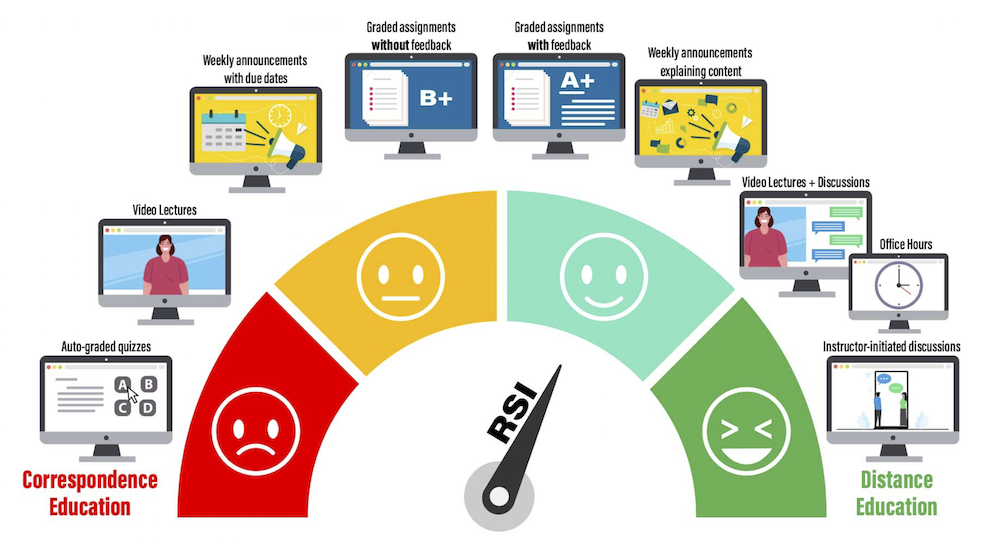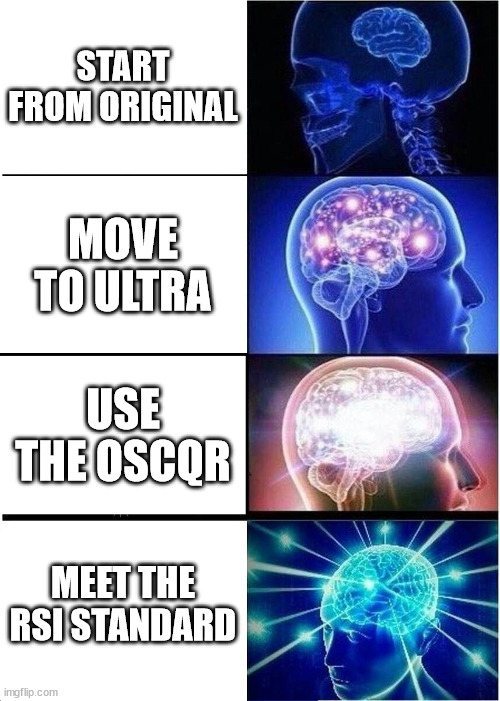I have been pestering y’all to move to Ultra and I will continue to do that until January 2026 when our conversion will be complete. So you have to look forward to a whole year of me being annoying about Ultra.
However, one half of my faculty chair duties have to do with online quality. To that end, I have taken over the work of the Online Quality Committee and redirected its goals in a more collaborative approach, with the agreement and support of the administration. In addition, I will be working on in collaboration with Jenn Kelley, and the faculty professional development department.
What does this mean concretely?
Well, meet Oscar.
You can find more information about the OSCQR here. The full list of standards is located under the Explanations, Evidences, & Examples drop-down menu:
- Overview and information
- Technology and tools
- Design and layout
- Content and activities
- Interaction
- Assessment and feedback
I have created fancier versions of the icons for each area:

That way, we can easily tag blog posts, training materials, etc. If you’ve paid attention (of course, you have), you may have noticed that my recent blog posts were tagged depending of which OSCQR area they addressed.
The Learning Technologies office also has a section on this on its website. You can find it under the Online Quality tab, as show below:

My approach is to use the OSCQR as a tool that we can all use to improve how we design our courses. This starts with aligning our training, whether under faculty professional development or under learning technologies with the rubric, when appropriate. This means that if you plan on offering a workshop or class through Jenn Kelley’s office, then you will be asked whether what you plan aligns with the rubric (it doesn’t have to). The OSCQR also comes with a self-scoring tool that you can use to assess your own courses. Or, if you participate in teaching squares, you can use the self-scoring tool to generate conversations with your teaching partners.
My approach is: how can we make this well-established tool work for us.
There is one aspect of the OSCQR that needs our collective attention: the Regular and Substantive Interaction (RSI) standard. We mentioned it in the video above and why it matters. What is the RSI? Again, there are resources:
On the OSCQR website;
or on the COD Learning Tech website, which also contains good strategies on how to meet the RSI standard.
But print this image and stick it on your fridge so you get to look at it a lot:

Ideally, we all need to be in the green areas. So expect to see some training dedicated to helping us all get to green and stay there.
This all starts in Spring 2025 and I will have a session at kick-off (date and time TBD) so we can talk about all this more specifically.
However, I am not just conveniently dumping this on you guys at the last minute. Over the semester, I have presented this plan to the Instruction committee, the faculty professional development committee, and to the faculty senate. And I have received support from all three groups.
So, the administration is on board. The CODFA leadership is on board.
Again, as always, my approach to this is through collaboration and respect for faculty agency and autonomy. No one is going to force you to use the OSCQR, but I highly encourage you to take a close look at it (use the links above) and I’m sure you will find it is fairly commonsense, and may prompt you to take a serious look at your courses and see if there are areas that, maybe, could use some updating.
In addition, as Gabi Frahm and I are preparing to teach our Foundations of Online Teaching in Spring 2025, we will make explicit use of the rubric.
Also, based on the feedback we received from this semester’s participants in Foundations of Online Teaching, we have decided to create a more advanced, successor five-week course where participants will use the rubric to update one of their courses in Ultra. This is a perfect opportunity to convert a course to Ultra and make it great.
SO, if you enjoyed my hassling you all about ULTRA, wait until I get going with the OSCQR.
Boy howdy, that’s gonna be fun.



